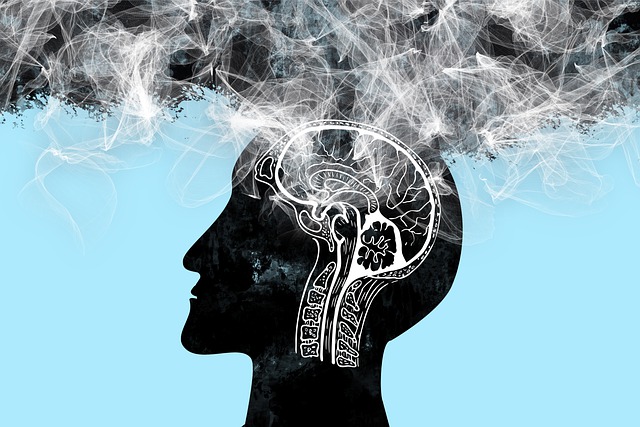| KEY POINTS |
Is cannabis use disorder associated with an increased risk of psychotic and non-psychotic unipolar depression and bipolar disorder? Findings In this cohort study of 6,651,765 people in Denmark, cannabis use disorder was associated with an increased risk of unipolar depression and bipolar disorder, both psychotic and non-psychotic. Meaning The results suggest that cannabis use disorder is independently associated with bipolar disorder and unipolar depression. Importance Cannabis use is increasing worldwide and is suspected to be associated with an increased risk of psychiatric disorders; However, the association with affective disorders has not been sufficiently studied. Aim To examine whether cannabis use disorder (CUD) is associated with an increased risk of psychotic and non-psychotic unipolar depression and bipolar disorder and to compare the associations of CUD with psychotic and non-psychotic subtypes of these diagnoses. |
| Design, environment and participants |
This prospective population-based cohort study using Danish national registries included all persons born in Denmark before December 31, 2005, who were alive, at least 16 years old, and living in Denmark between January 1, 1995. yy December 31, 2021.
Diagnosis of CUD based on exposure records.
| Main result and measures |
The primary outcome was record-based diagnosis of unipolar psychotic or nonpsychotic depression or bipolar disorder. Associations between CUD and subsequent affective disorders were estimated as hazard ratios (HRs) using Cox proportional hazards regression with time-varying information on CUD, adjusting for sex; alcohol use disorder; substance use disorder; having been born in Denmark; calendar year; parents’ educational level (maximum achieved); parental disorders due to cannabis, alcohol or substance use; and parental affective disorders.
| Results |
A total of 6,651,765 individuals (50.3% women) were followed for 119,526,786 person-years. Cannabis use disorder was associated with an increased risk of unipolar depression (HR, 1.84; 95% CI, 1.78-1.90), unipolar psychotic depression (HR, 1.97; 95% CI, 1 .73-2.25) and non-psychotic unipolar depression (HR, 1.83; 95% CI, 1.77-1.89).
Cannabis use was associated with an increased risk of bipolar disorder in men (HR, 2.96; 95% CI, 2.73-3.21) and women (HR, 2.54; 95% CI, 2.31). -2.80), psychotic bipolar disorder (HR, 4.05; 95% CI, 3.52-4.65), and non-psychotic bipolar disorder in men (HR, 2.96; 95% CI, 2.73 -3.21) and women (HR, 2.60; 95% CI, 2.36-2.85).
Cannabis use disorder was associated with a higher risk of psychotic than nonpsychotic subtypes of bipolar disorder (relative HR, 1.48; 95% CI, 1.21-1.81), but not unipolar depression (( HR, 1.08; 95% CI, 0.92-1.27).
| Conclusions and relevance |
> Conclusions
The results of this cohort study suggest that cannabis use is associated with an increased risk of psychotic and non-psychotic bipolar disorder and unipolar depression. These findings have implications regarding the legalization and control of cannabis use.
Importantly, there appears to be a need to improve knowledge about the dose-dependent effects of cannabis use on the brain, cognition, and behavior; identification of risk factors for the transition from cannabis use (disorder) to psychiatric disorders; and the effects of cannabis cessation on long-term psychiatric risk.
> Implications
Our findings support the idea that cannabis use may represent an independent factor associated with unipolar depression and bipolar disorder. The risk of psychiatric disorders appears to be higher for schizophrenia than for affective disorders and higher for psychotic bipolar disorder than for non-psychotic bipolar disorder, which could indicate a primarily psychotogenic effect of cannabis.
Δ9-Tetrahydrocannabinol, the main psychoactive component of cannabis, acts on cannabinoid receptors (CB1) and is suggested to increase the risk of psychosis by altering striatal dopaminergic function or by disrupting normal endocannabinoid modulation of cortical development and function .
In addition to its links to psychosis, the dopaminergic system is closely related to neurocognitive processes relevant to affective disorders, such as reward processing. However, a coherent model of how cannabis may influence the development of affective disorders is lacking. Future studies may further elucidate these effects in a transdiagnostic framework.
Based on our findings and the evidence regarding cannabis and schizophrenia, interventions to reduce cannabis use through public education and more targeted interventions may be advisable. However, direct evidence that quitting cannabis can reduce the risk of affective disorders is lacking, and although several interventions appear to be associated with reducing cannabis use in healthy adolescents and adults, they may be less effective in people with mental disorders.
Although some trials have demonstrated significant improvements in depressive symptoms following a psychosocial intervention to reduce cannabis use, these improvements may be mediated by broader effects of psychosocial interventions, providing little evidence for the beneficial effects of cannabis cessation in Yeah.
Interventions targeting at-risk individuals are currently hampered by limited knowledge about factors associated with the transition from cannabis use (disorder) to psychiatric disorders that require further study.
Final message This population-based cohort study found that cannabis use disorder (CUD) was associated with an increased risk of psychotic and non-psychotic bipolar disorder and unipolar depression. These findings can inform policies on the legal status and control of cannabis use. |
















